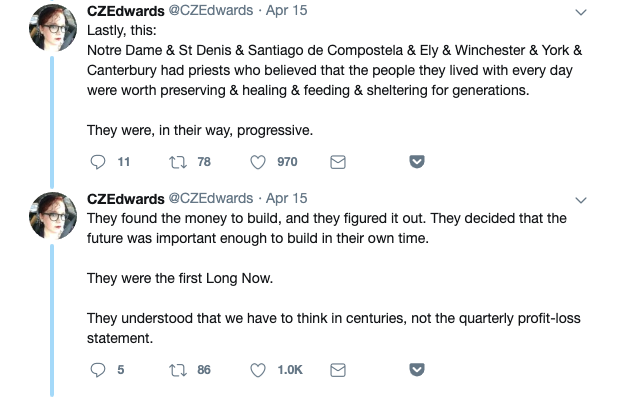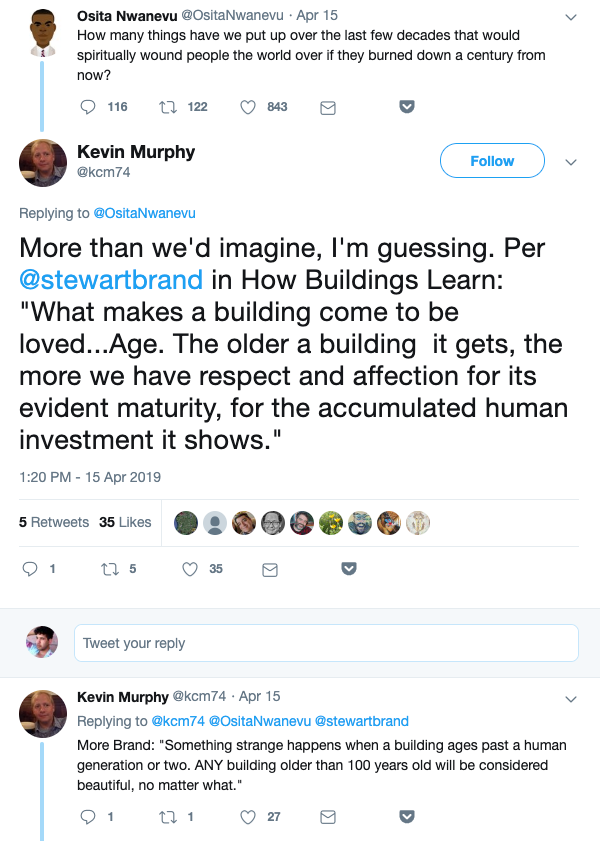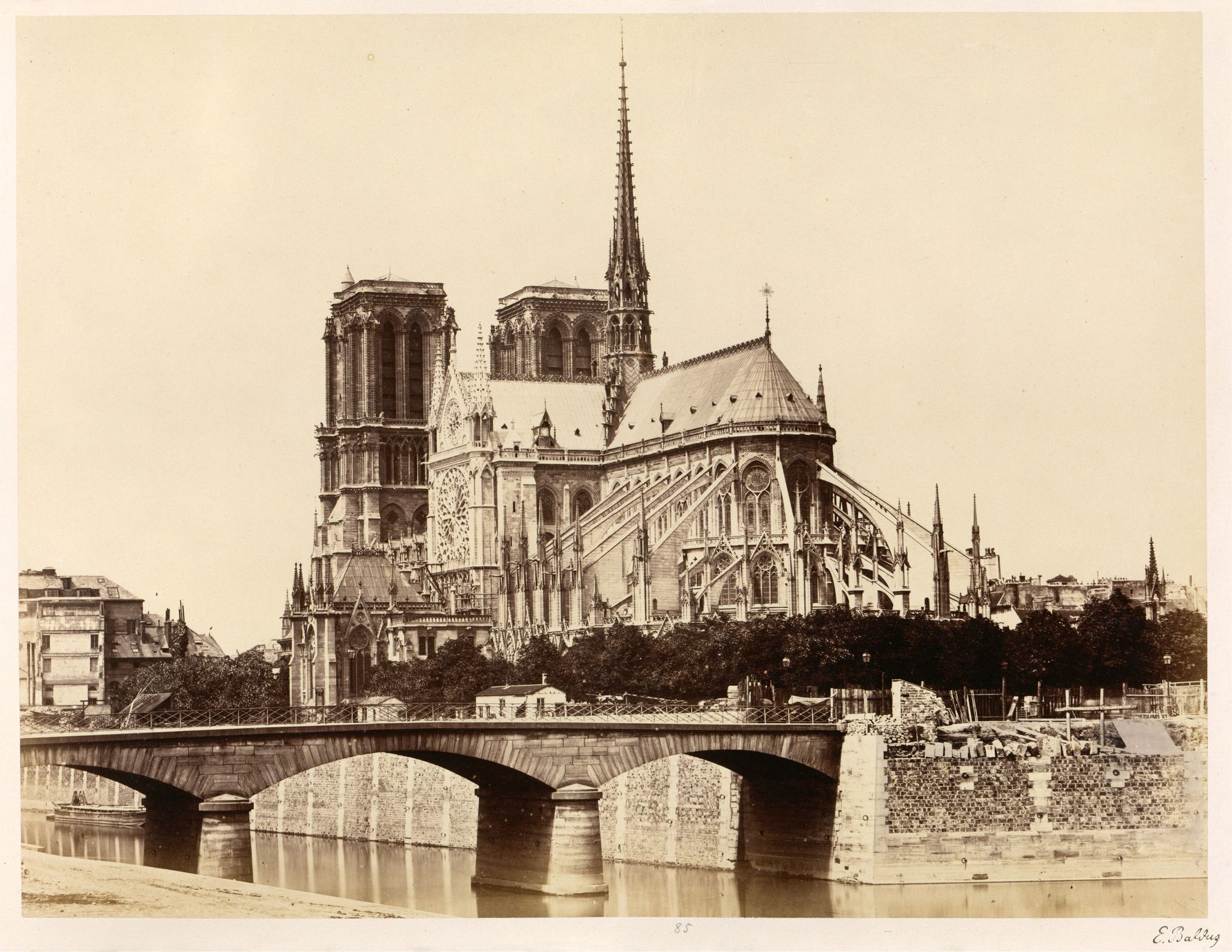In the aftermath of the fire, a number of Long Now community members offered perspective and reasons for hope. Others helped contextualize the fire by invoking some of Long Now’s ideas about long-term thinking. Some of those responses and quotes are reproduced below.
From Jeffrey McGrew, architect of The Interval at Long Now, who spoke there in 2015:
Thankfully I believe the entire structure was laser-scanned inside and out at an extremely high level of detail just a few years ago by a a group of art historians and academics.
Also with the rise of more affordable large-scale digital fabrication, which is behind the incredible progress made at La Sagrada Familia in recent years (turning what was going take a few more generations into something that will be completed within our lifetimes), it’s possible the reconstruction could take much less time than anticipated.
A terribly sad day indeed, but also there is hope for the future.
From writer CZEdwards:

From historian Kevin Murphy, quoting “How Buildings Learn” by Long Now Co-Founder Stewart Brand:

From Paul Saffo, a futurist at Stanford and Long Now Board Member:
Watching the news, I cannot shake the feeling that profound and unexpected good will rise from the Notre Dame fire.
In a century, the fire may well be remembered as the event that saved this cultural treasure — and other treasures.
And the fire will remind the rest of the world to love it. The fire will shock the keepers of other cultural treasures worldwide and cause them to look closely at additional protection/preservations. Other treasures will thus be saved from neglect.
For the French, Notre Dame is a national cultural symbol as well as a religious symbol. Its restoration can become a magnet to inspire and bring the public together and help rekindle French solidarity in this perilous and uncertain time. And the restoration is an invitation to to rebuild for another 1000 years.
I couldn’t help but think of the motto of Paris, Fluctuat nec mergitur [“this vessel rocks but is never submerged”]. A motto, incidentally, that speaks to us all amidst the stormy global sea today. Wave-tossed but still afloat… indeed…
Noting the construction of Gaudi’s Sagrada Familia in Barcelona, the restoration project could be an opportunity for dramatic architectural/engineering innovations that honor the past and lead the future.
All in all, it is a reminder that Notre Dame is neither a museum nor a mere historical artifact, but a living, breathing structure, the heritage not only of the French, but all mankind.
